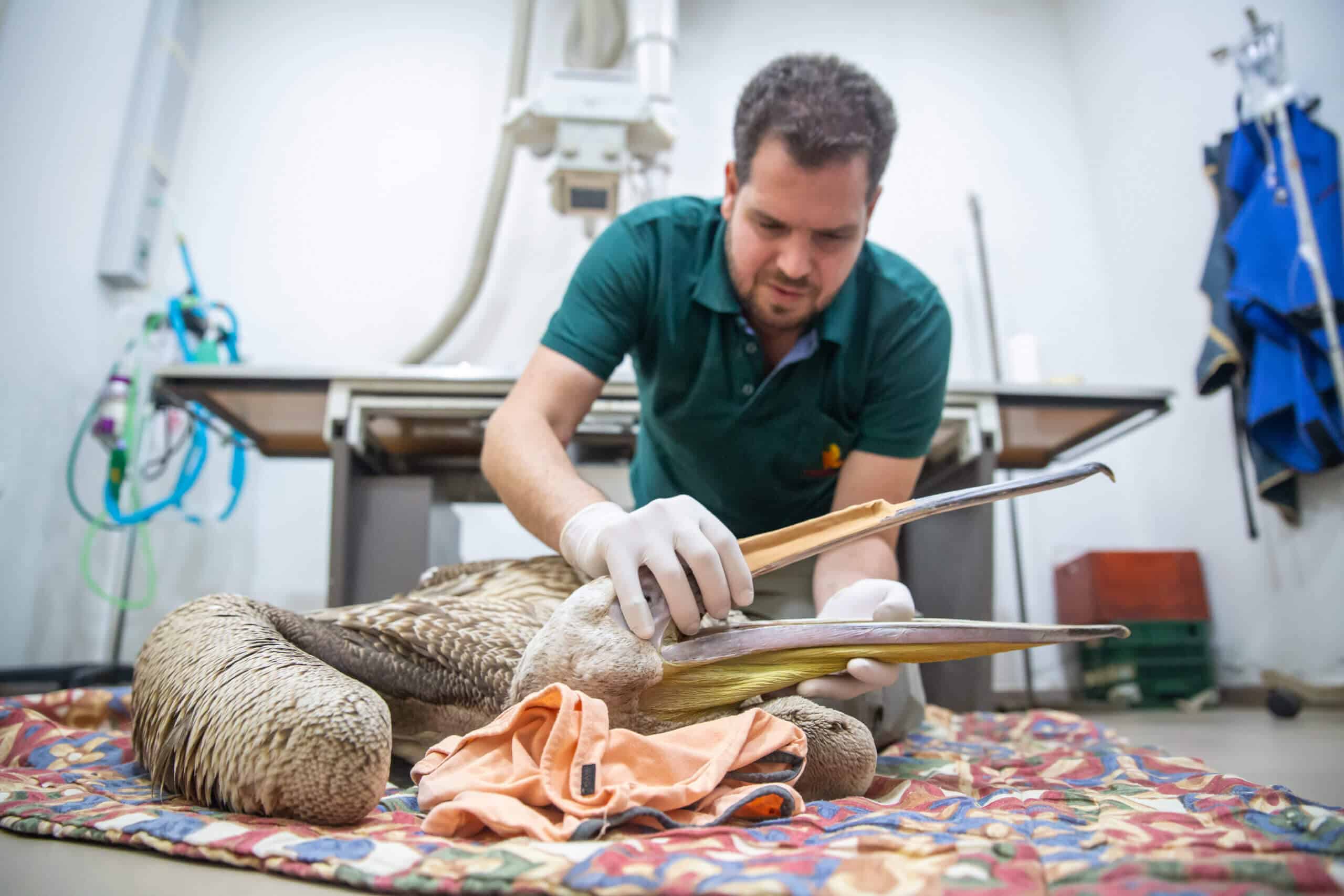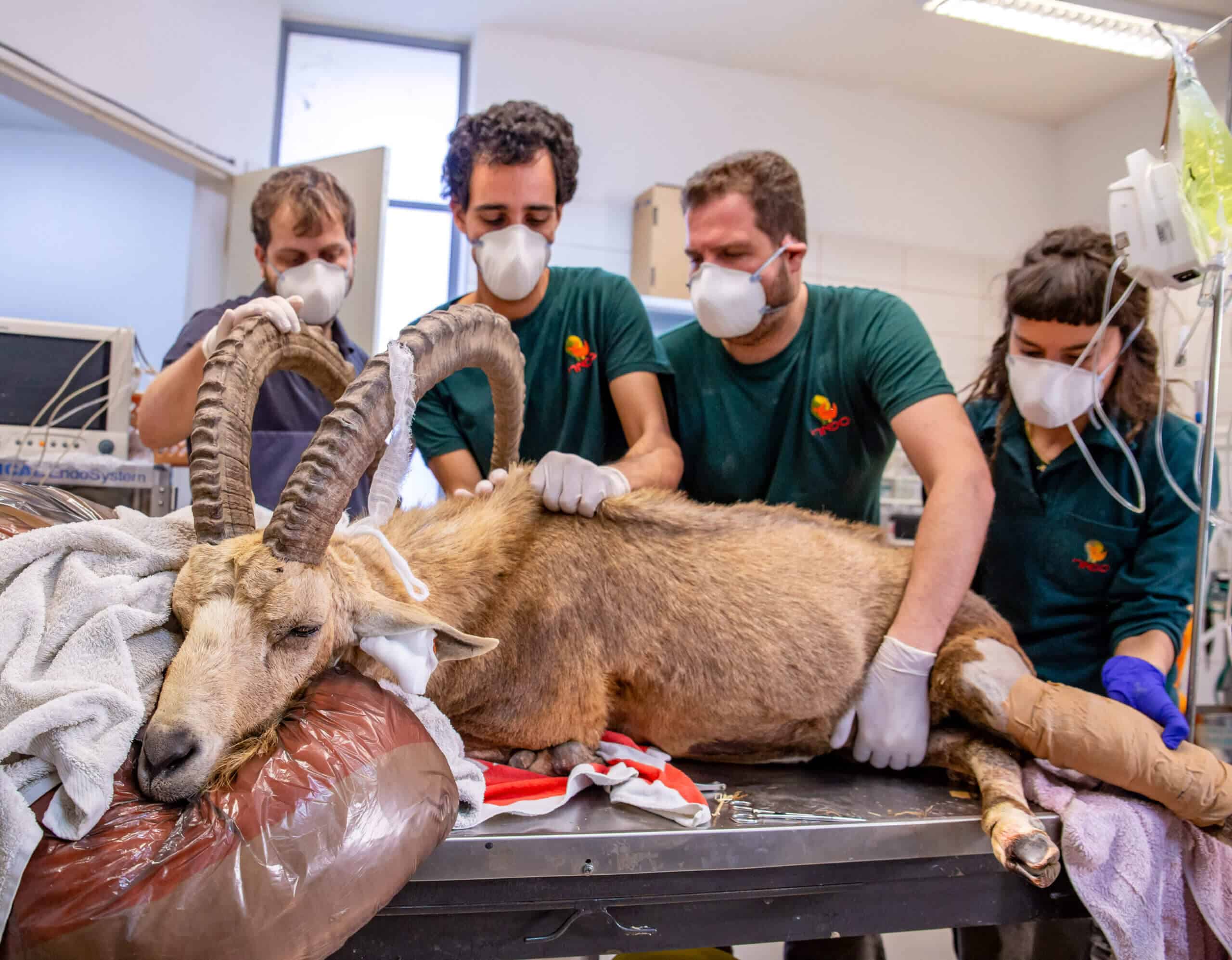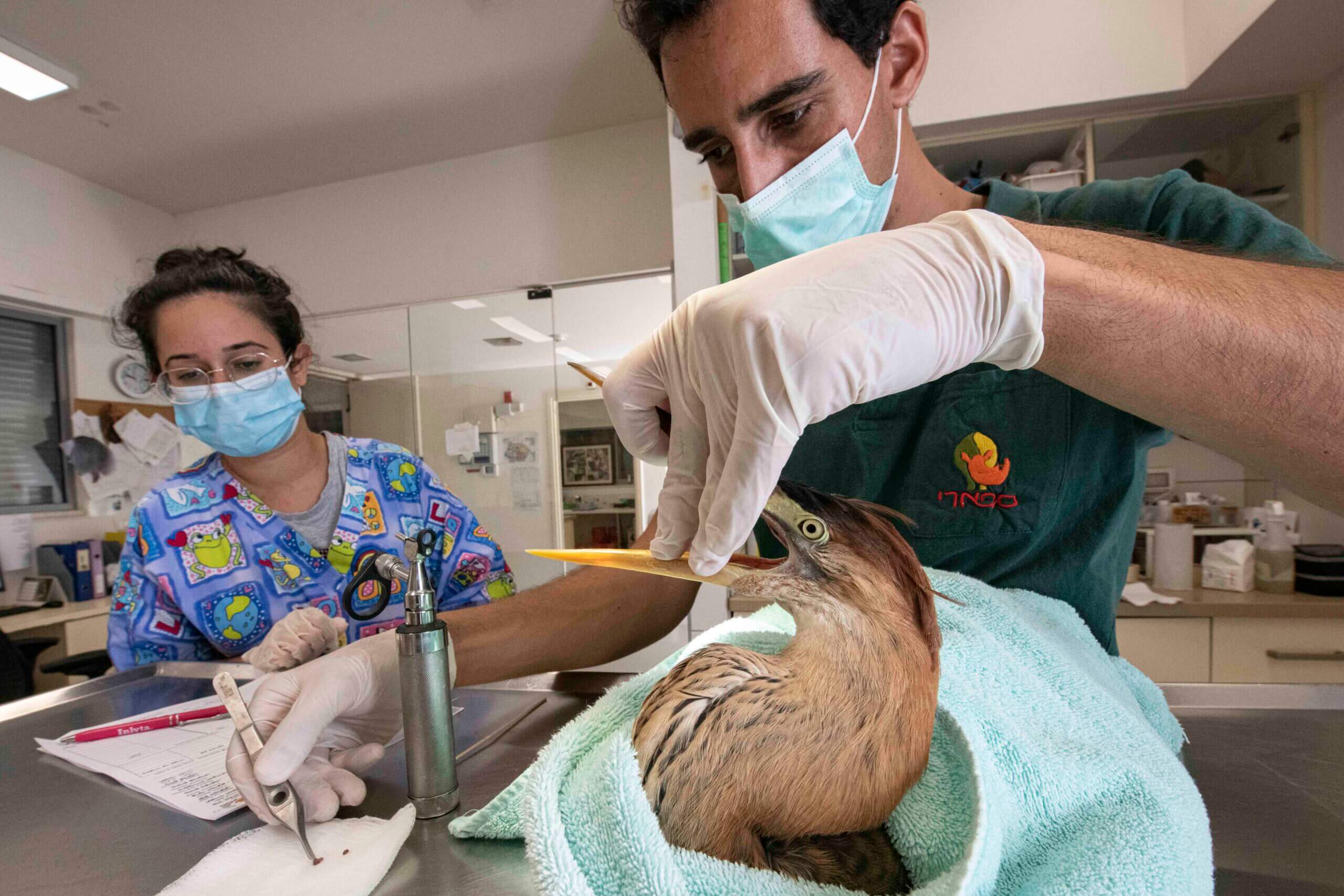What is a wild animal? An animal that is found in the wild, that is not domesticated and that the person does not take care of. So what do wild animals do on safari? Private individuals or inspectors of the Nature Reserves and Gardens Authority who find injured animals in the wild - bring them to the Safari Wildlife Hospital, where they are treated and released into the wild as quickly as possible

Written by: Ascher Erblich-Brifman and Pel Erblich, Young Galileo
We are an animal loving family. We raise 13 cats, a dog, a hamster and a vole, and are always happy to meet more animals. We live in Haifa, on the border of the forest, so we are used to visits from wild animals.
What is a wild animal? An animal that is found in the wild, that is not domesticated and that the person does not take care of. Wildlife is part ofecological systems, and therefore it is forbidden to disturb them, capture them or try to domesticate them, not even feed them!
Guests from nature
We are often visited by a family of mongooses, who come to our garden to look for figs that have fallen from the tree, snails and other insects. A mongoose is a mammal from the series of carnivores, from the mongoose family. The most common species in Israel is the common mongoose. Her body is low and elongated, her tail is long, her head is pointed and her legs are short. The mongoose family found a secret entrance to our garden. The cubs run amok in the grass, and the mother sits at a distance and keeps watch.
At night the badgers come. A badger is a carnivore from the family ofWeasels. There are several species of badgers, and in Israel the common badger is common. The badgers are omnivores, live in underground burrows and come out at night.
Sometimes hedgehogs also come. They are also only active at night and sleep during the day. BIsrael Three types of hedgehogs are common: Common sand hedgehog, A talking hedgehog וCommon hedgehog. The hedgehogs on the Carmel are common hedgehogs. The other two species live in the deserts of the Negev and the south of the country.
During the day, jays and ravens come to our garden. Hornbills are small songbirds, and crows are birds of the crow family.

From time to time, two woodpeckers also come. The wood shrew may look scary because it resembles a snake, but it is just a large, legless lizard. The crayfish feeds on snails, insects, and even lizards and mice. Due to his resemblance to a snake, there is a fear that people will try to kill him, so he was declared a protected animal in Israel.
A small turtle also comes to visit and eat leaves of the monk's hat and poppet. He enters the garden alone and leaves alone - it is forbidden to cage turtles and keep them as pets, even if people do it. On top of that, outside the fence we see wild boars, jackals and rock rabbits.
Welcome to the wildlife hospital

Have you seen the series "Save the Wild Animals" on TV? Look for it here 11. The series describes what is happening at the safari's wildlife hospital in Ramat Gan. The injured animals are brought to the place by inspectors of the Nature Reserves and Gardens Authority or private individuals who have located an injured animal and wanted to help it.
As an animal-loving family, this series answered our curiosity to get to know wild animals in depth, to discover wild animals we didn't know existed in Israel and to see up close the hospital and its important work. Words like "immobilization", "flight training", "freshening" (removal of damaged tissues to improve the healing ability of a wound) and "feather transplant" (did you know that the hospital has a "feather bank" and it is possible to transplant missing feathers to birds?) have become commonplace. in our house
We also often brought injured chicks, sick hedgehogs and other animals that needed treatment to a veterinary clinic or to a volunteer of the ambulance, and he took the animal to the wildlife hospital. The Hivolance is a special ambulance for animals and volunteers transport sick or injured animals to the wildlife hospital.
The wildlife hospital treats more than 3,000 injured animals a year. It was founded in 1990 and is managed by safari veterinarian Dr. Yigal Horvitz, in cooperation with the safari, the Nature and Parks Authority and the Association for the Rehabilitation of Wild Animals in Israel. Since its establishment, it has treated more than 20,000 wild animals. The hospital has a laboratory, an imaging room with X-ray and ultrasound devices, an operating room, a treatment room, hospitalization rooms, an intensive care room and a chickery for caring for chicks.
Reduce contact with humans
The wildlife hospital is closed to visitors. The animals hospitalized there are in a sensitive state, so anyone may stress them. On top of that, since these are wild animals, the goal of the team is to reduce the contact between them and humans, and only treat them and return them to nature as quickly as possible without "signing" them.
Stamping (or imprinting) is the process of bonding the animal to the person taking care of it, usually immediately after its birth or hatching. In this situation, the handler may be perceived by the animal as a parent. This process may be appropriate when we are trying to raise a pet (such as a dog), but problematic when it comes to a wild animal in the wild.
We received special permission to come to the wildlife hospital for the purpose of writing the article. At the Gozliya, we saw how the caretaker feeds a two-week-old hedgehog that was found abandoned from a feeding syringe. She held him gently inside a towel, so as not to be stabbed by its thorns and so as not to hurt him; We saw an injured sparrowhawk, a tiny scout and two ravens.
In the acclimatization chambers we saw falcons preparing to be released back into the wild. The falcons arrived at the hospital with various injuries. Over the years, the falcons dare to approach urban areas, and because of this they are injured. The falcon is a protected bird of prey, found in all parts of the country.
Suddenly, a large, mature and huge man arrived in the central treatment room. Ooh is the largest night predator in the world. It is common in Israel in mountainous areas, and it can also be found in Europe and Asia. It was explained to us that the brother was imprisoned in someone's house, illegally.
It is forbidden by law to keep wild animals at home! An inspector from the Nature Reserves and Gardens Authority heard about the case (unfortunately, there are quite a few such cases), raided the house where the brother was kept and brought him to the hospital. The person who did a forbidden act and adopted a brother, is expected to be punished.
In the treatment room we saw how the man's body temperature is measured and his organs are checked. He looked very scared and just tried to fly, and in the process fixed his orange eyes on us. The caregivers wrapped him in a towel to make him feel more comfortable, and even hid his eyes. Sometimes when you cover the head of an animal that is under stress, it stops seeing the stressor and calms down.
While we were listening to the story, a nurse came out of one of the rooms, holding a cage with a love bird in her hand. A lovebird is a domesticated bird that you buy in pet stores. What is a lovebird doing at the wildlife hospital? It turns out that some people abandon their pets, and some of these abandonments happen on safari. This is how the workers find abandoned dogs and cats in the safari area, and even birds and rodents in cages.
We left the tour fascinated by the important work the hospital staff does for the animals. The place accepts volunteers from the age of 18. In the meantime, we are satisfied with providing help to the animals around us, and in case of need we make sure to transfer them to the right hands.
Important Information!
Did you find an injured wild animal? Call the hotline of the Nature and Parks Authority (3639*) Remember: it should be touched as little as possible. You can prepare a crate for her (with air vents, of course), place her gently in it and serve her food and water. If she wants, she will come over to eat and drink. You can bring the injured animal to the wildlife hospital or contact the center, and a volunteer will come to pick it up in a hurry to the hospital.
Eshkar Erblich-Brifman is a children's and youth author. Has published 34 books to date. These days her new book "More Stories with Wings" (the sequel to "Stories with Wings") is being published Illustrated by Rami Tal, Dani Books Publishing. Ascher leads online writing workshops for children and youth. site: www.eshkar.com
From Young Galileo - the monthly for curious children, issue 205 February 2021
Join us on Facebook https://www.facebook.com/YoungGalileo
More of the topic in Hayadan:
